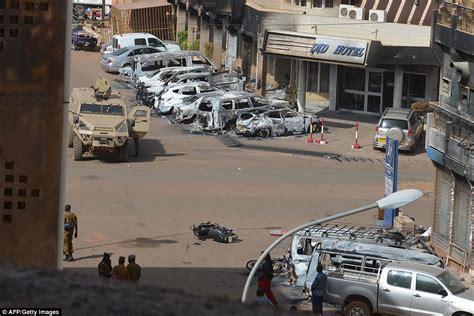
Analysis: Al Qaeda kills hundreds in Burkina Faso attack
On Saturday, the Group for Support of Islam and Muslims (JNIM), Al Qaeda’s branch for West Africa, killed at least 200 people in a massive assault in central Burkina Faso. The strike took place in the vicinity of Barsalogho, a locale not far from the city of Kaya, a large bastion outside of Burkina’s capital of Ouagadougou.
According to survivors and security officials, an unspecified number of JNIM fighters amassed on a military position near Barsalogho, where dozens of civilians and members of Burkina’s Volunteers for the Defense of the Homeland (VDP), a nationwide self-defense militia, were helping the soldiers build defensive trenches and positions.
The jihadis then indiscriminately opened fire on everyone within the military position, with survivors reporting to Al Jazeera that men, women, and even children were killed in the attack. At least 200 people were killed, with another 300 wounded. Reinforcements of Burkinabe troops and VDP personnel reportedly helped repel the attack and prevented further casualties.
The exact breakdown of killed civilians and military personnel remains unclear, but Burkinabe security officials have noted that large numbers of people from both categories were casualties. Radio France Internationale reported that the casualties also included local government officials.
Voice of America, however, reported that the majority of people killed were indeed civilians. Videos published on social media—seemingly filmed by JNIM members themselves—appear to show mainly civilian bodies in the trenches. Videos filmed by those responding to the scene also show many military vehicles on fire and significant physical destruction of the base.
JNIM was relatively quick to claim responsibility for the event, though its official statement was terse. Released through its Az-Zallaqa Media, JNIM simply stated that its forces “took complete control over a Burkinabe militia headquarters in Barsalogho in Kaya Province this morning.”
The group has thus far not yet released a more detailed statement nor any official photos as of this time of publishing. However, it has claimed a series of operations inside northern Burkina Faso in recent days, all of which included photographic evidence.
Any official media released by the group on the Barsalogho attack, if and when published, will likely exclusively focus on military casualties, as this would correspond with al Qaeda’s broad directive to avoid highlighting wanton civilian deaths in official media releases. If civilians are shown, JNIM will likely claim the bodies as VDP members, as this would fit within its twisted ideology of who constitutes “acceptable” targets.
Deteriorating Burkina Faso
The ruling military junta in Ouagadougou is shakily struggling to combat the ever-growing jihadi threat from both JNIM and its rival, the Islamic State Sahel Province (ISSP)—though JNIM remains the bigger threat inside Burkina. According to estimates from late last year, the al Qaeda branch controlled at least 40% of Burkinabe territory. However, ISSP continues to strike inside Burkinabe as well.
This struggle includes trying to control the fighting inside Burkina Faso, as well as trying to prevent the flow of jihadist violence out of Burkina’s borders and into neighboring states like Benin, Togo, Ghana, and now, to a lesser extent, Ivory Coast.
Whereas Ivory Coast has seemingly been able to repel JNIM’s advances on its territory, and Ghana remains officially silent on any reported JNIM presence within its northern areas, Benin and Togo currently struggle to fight back against JNIM. Though JNIM has been able to build bases in both countries, much of the violence in those countries still emanates from Burkina Faso.
Under the current military regime of Ibrahim Traoré, the Burkinabe state has increasingly turned to the VDP to try to stymie JNIM’s advance. Traoré’s leadership has emphasized the self-defense militia, which has greatly expanded and now essentially acts as another wing of Burkina’s formal military. As first stated by Héni Nsaibia, the VDP under Traoré “became a central pillar of his military approach” to JNIM.
In response, JNIM has increasingly made VDP positions and formations key targets in its rampage across much of Burkina.
In addition, though the use of ex-Wagner forces is not as conspicuous as in its northern neighbor of Mali, Russian mercenaries are in Burkina assisting the regime in various capacities. Russians are mainly currently used in a training role for elite Burkinabe troops and regime protection in Ouagadougou.
However, the situation could change if Traoré requests more Russian mercenaries and the Kremlin actually deploys them to Burkina. The role of ex-Wagner forces could become similar to their deployment inside Mali, where they take a more offensive part against the jihadists.
This weekend’s massacre in Barsalogho is a stark reminder of JNIM’s remaining threat and capacity for violence inside Burkina Faso. In many ways, this unfortunate attack also signals the continued deterioration of the Burkinabe state and serves as a barometer of the Sahel as a whole.
Source » longwarjournal.org





